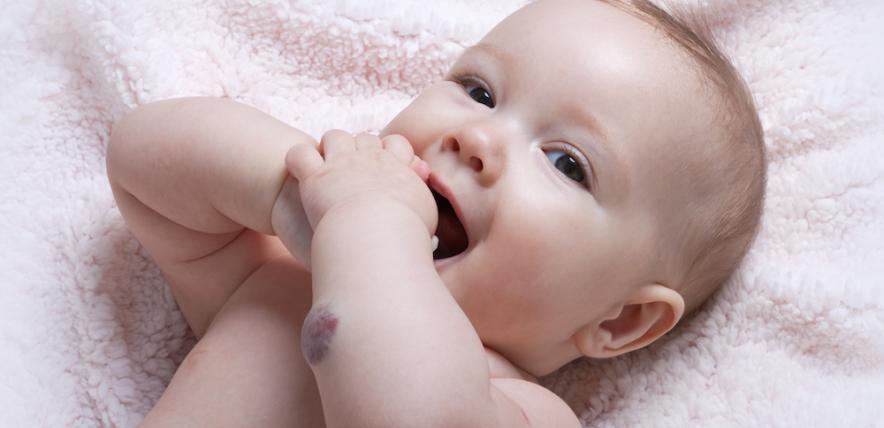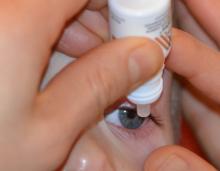Birthmarks are not uncommon. About one in three babies in the UK is born with a birthmark of some kind, or will develop one a short time after. They vary in size and colour, and while some will fade as your child grows, others may become permanent.
Why do children get birthmarks?
Doctors don’t really know what causes some children to develop birthmarks, or how they get there.
But they are certain that they are not caused by anything the mother does or eats in pregnancy, and there is no known way of preventing them.
Are birthmarks dangerous?
Most are harmless and will fade in time, but a few can cause problems. Experts advise that birthmarks should be diagnosed to find out if treatment is needed.
Vascular birthmarks
Most birthmarks are caused by a problem with the tiny arteries and veins in the skin, and these are called vascular birthmarks.
These can be separated into two groups – vascular tumours and vascular malformations and they occur mainly in the head and neck area, including the face.
Their colour will depend on whether the affected blood vessels are close to the surface of the skin – when the birthmark will be red – or if they are deep, causing the birthmark to appear blue.
Some of most common vascular birthmarks include:
Salmon patch (also known as stork mark). These are flat red or pink patches that appear on the baby’s face, usually the eyelids, neck or forehead. These occur in around half of all babies and will fade within a few months, though those on the forehead may take up to four years. Salmon patches become darker when the baby cries because they become filled with blood.
Infantile haemangioma. These birthmarks can appear anywhere on the body and are also known as strawberry marks as they are usually red and raised on the skin. They are most common in girls and may get bigger in the first six months before eventually shrinking and disappearing.
Congenital haemangioma. This is a tumour made up of thickened skin and many thin-walled blood vessels. It is fully grown at birth, and many shrink much faster than other haemangiomas. It may be picked up on prenatal ultrasound scans.
Port wine stain. These are flat red or purple marks and can vary in size. They usually occur on the face, chest and back.
Pigmented birthmarks
Other types of birthmark are non-vascular and are caused by clusters of pigment cells. These are known as pigmented birthmarks.
They include:
Café-au-lait spots. These are coffee-coloured patches and children may have one or two of these birthmarks. However, if you child has more than six by the time he is five you should see your doctor, as it could be a symptom of neurofibromatosis, a genetic condition.
Blue-grey spots look like bruises and are often blue-grey in colour. They usually fade by the time the child is four years old, and tend to appear more on people with brown or black skin. The NHS advises that if your baby is born with a blue-grey spot, this should be noted on their medical record.
Congenital malenocytic naevi are also known as congenital moles, and are usually present from birth. They are caused by an overgrowth of pigment cells in the skin, and become less visible over time. There is a risk that large naevi may develop into skin cancer later.
Get a diagnosis
If you are concerned about your child’s birthmark, you should seek medical advice.
Dr Samira Syed, a paediatric dermatologist at Great Ormond Street Hospital, said: “It is essential that you do not self- diagnose the type of birthmark your child may have. Getting a proper diagnosis is important to getting the right form of treatment.
"You need to know the type of birthmark and this should be confirmed by a doctor or health professional. If you are in any doubt then seek specialist advice."
Once you have a diagnosis and you know what kind of birthmark your child has, make sure you check them regularly to check they don't itch, bleed, cause pain or become infected. If they do, you should consult a doctor.
Other people's reactions
If your child has a large birthmark it may attract comments and questions from relatives, friends and even strangers. It is important that you have a straightforward response prepared as your child will look to you to how they should respond to people's comments. If they hear you answer clearly and concisely without getting emotional, then they will be able to respond in the same way. Make sure you talk to your child about their birthmark honestly to help them accept it as just a natural part of their body and tell them what to say if anyone comments on it. For example: "It's a normal birthmark. I was born with it."
Further reading:
This article was written for the Early Years Alliance by Dorothy Lepowska-Hudson and is for information purposes only. To get a diagnosis for you or your family, you should always consult a medical professional.







